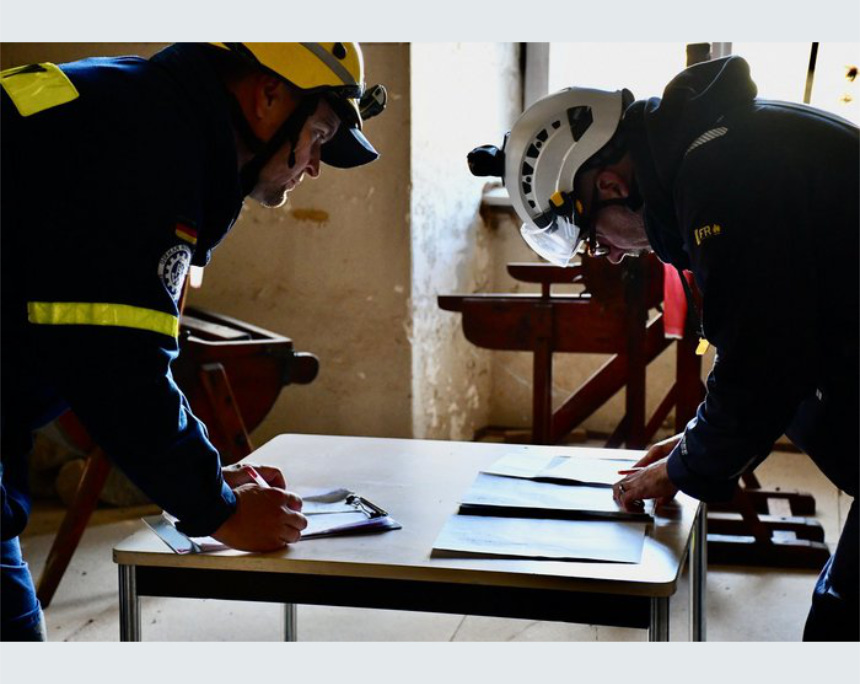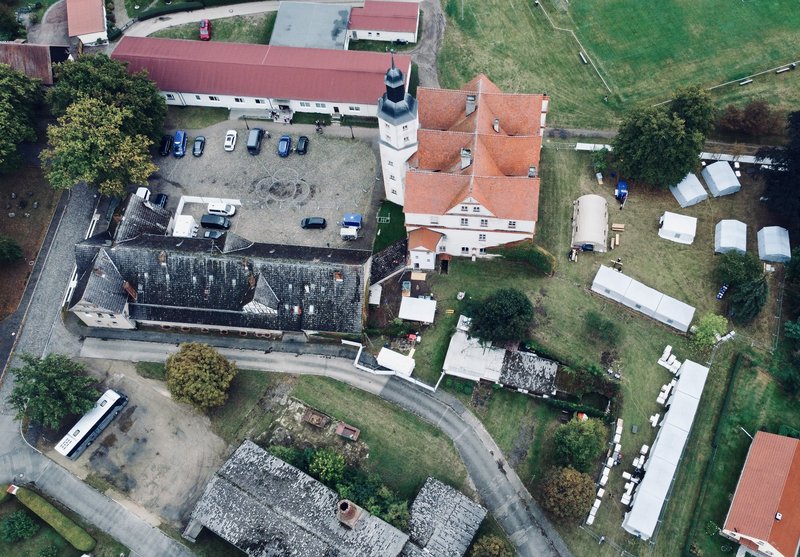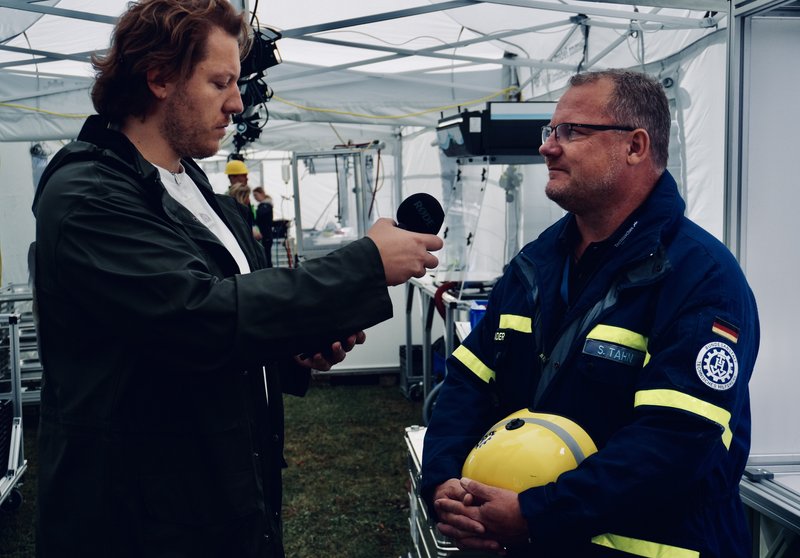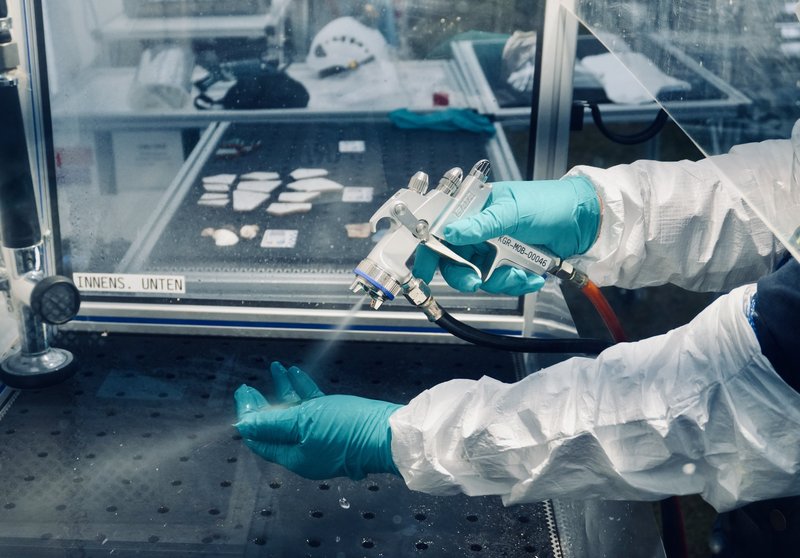Training Exercise for Cultural Heritage Response Unit
From 25 to 28 September 2024, the first full-scale exercise of the Cultural Heritage Response Unit (CHRU), funded by the German Federal Foreign Office, took place at Demerthin Castle (Gumtow Municipality). In a fictitious earthquake scenario, experts were trained in how to effectively protect and preserve cultural heritage worldwide after a disaster. The aim is to be operational by 2025.
Content
The German Archaeological Institute (DAI), together with the Federal Agency for Technical Relief (THW) and the Leibniz Centre for Archaeology (LEIZA), is creating a Cultural Heritage Response Unit as part of the KulturGutRetter project to provide rapid assistance from Germany for the emergency care of cultural heritage in the event of disasters worldwide. During the full-scale exercise, the volunteers of the KulturGutRetter Cultural Heritage Response Unit (CHRU) had their first opportunity to apply what they had previously learned in a large-scale exercise scenario. The site of the fictional earthquake scenario was the Renaissance castle of Demerthin in the Prignitz district of Brandenburg. On arrival at the exercise site, the 41 CHRU participants were confronted with the following scenario.
The Scenario of an Earthquake
What happened in this scenario? A major earthquake struck the region. National and international responders have completed the life-saving phase. Now, a cultural monument and its inventory need to be secured. Existing international requests for assistance have been extended to include the protection of cultural heritage, and this has been implemented in the EU Civil Protection Mechanism (UCPM). Germany therefore offered the assistance of the CHRU. The unit flew to the affected area, where a castle is now being secured and cultural objects recovered.
Recover, Record and Effectively Preserve Cultural Heritage
“There is no blueprint for this project. As CHRU team leader, I found it particularly striking how well the cooperation and knowledge transfer worked. I am surprised that despite our different backgrounds – we are THW workers, archaeologists, conservators and engineers – we really came together as a team. The desire to protect something of value to us and the common focus on a meaningful goal brought us together,” said Stefan Tahn, CHRU team leader.
During the exercise, volunteer experts in building research and heritage conservation, supported by THW emergency services, carried out a damage survey of the castle, assessed the damage and documented the building. The use of the site was made possible by the Brandenburg State Office for the Preservation of Monuments and the Prignitz District Office for the Preservation of Monuments and with the kind permission of the Gumtow community.
Together, they removed debris from the castle’s rooms to relieve the load on the structure. Volunteers filled cavities in the building and salvaged sculptures, decorative elements and other movable cultural artefacts, which were preserved in the laboratory on the castle grounds. Experts used the DAI’s QField-based digital documentation system to record paintings, statues and other cultural assets. In the mobile laboratory for emergency conservation developed at LEIZA for rapid transport to disaster areas, the CHRU of Conservation and Restoration photographed, cleaned and packed the recovered cultural property. THW, with its many years of operational experience, provided the technical and logistical components of the team, ensuring the team’s self-sufficiency during the operation, organising the transport of equipment and running a camp for the team. It also facilitated communication and provided expert advisors. THW led the entire operation and provided experienced volunteers to lead the team on site. In this scenario, the participants were able put to the test their team structure, the special equipment and the procedures of the CHRU unit for the first time after their training.
The training of the team and the associated major exercise in 2024 are important milestones in the KulturGutRetter project for the protection of cultural heritage. The CHRU is scheduled to be ready to assist in the international protection of cultural property in disaster situations by early 2025.
The “KulturGutRetter” Project
The KulturGutRetter project has been developed since 2019 under the leadership of the German Archaeological Institute (DAI), together with its partners from the Federal Agency for Technical Relief (THW) and the Leibniz Centre for Archaeology (LEIZA). The project is supported by the German Foreign Office and the German Bundestag. The aim is to set up an international unit that, through the UCPM, can provide assistance worldwide when cultural assets are threatened by earthquakes, floods or other disasters. This year, for the first time, the project has recruited and begun training more than 100 volunteer cultural property protection experts.









